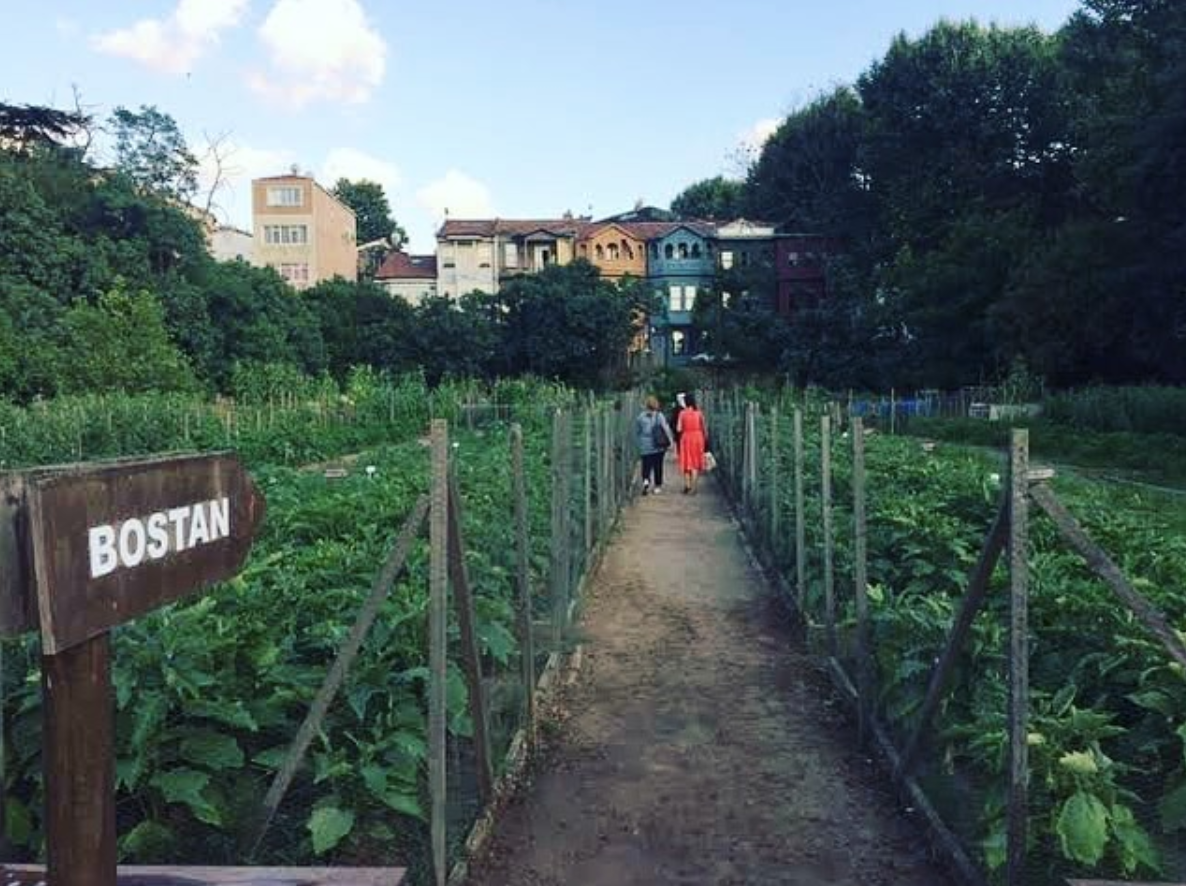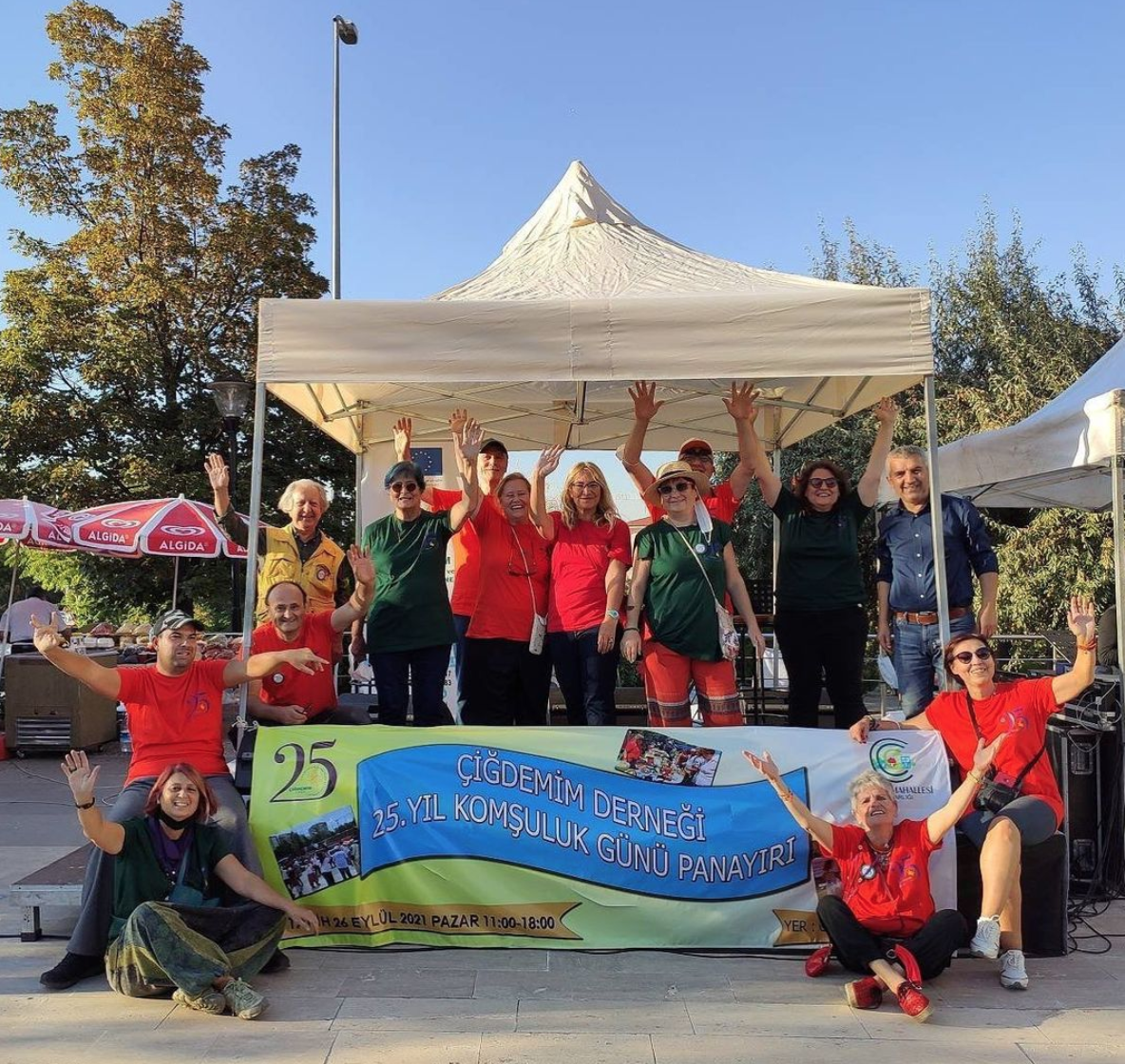Urban Social Innovation: Self-organizing communities in the city
November 28, 2022
About 5 years ago, I was working with refugee communities in Istanbul that were settled in the dormant peripheries of the city. Imagine a neighbourhood in which the windows are lined with cardboard, and holes in the wall are covered with plastic plates. Visualize children bouncing on a discarded sofa, a pile of garbage right behind it, and a small courtyard ahead with a scratchy living area made of scrap materials. This scratchy living space soon turned into a library, a meeting place for women, and an art studio for children. In secluded urban spaces, certain self-sufficient social networks and unique financial mechanisms are formed in the city over time. Here, we can see the cases of strong solidarity toward meeting the needs of the community such as bartering furniture and kitchen equipment or taking care of the children of working single mothers in shifts.
Here, urban social innovation emerges as a grassroots movement in areas that have to be self-sufficient and do not have relatively equal opportunities with the rest of the city, which is not a unique example, especially in megacities like Istanbul.
Although innovation and social innovation are popular notions in the last 10 years, they have many aspects that are not understood. In Türkiye, the common perception towards innovation is that there are product and service-oriented initiatives that reject traditional ways of doing business or that can only be available for a particular class in society. When “city” is included in this equation, the relationship between city, social and innovation often turns into a vague and cool term where concepts are lost in each other.
We can consider cities as "social laboratories" as Park defines, or as a network of trade and financial chains made up of interconnected global cities, as Sassen says. However, cities considered as “living organisms”, have long been associated with innovation and creativity.
In this sense, the city is seen as an innovation center that enables networking, gathers production and creative ideas, and includes financial and social opportunities.[1] The concept of urban social innovation reveals different relationships and organizational forms, ranging from projects where high-tech industry is developed, for-profit enterprises are tested in the city and “social” is a testbed, to applications where “social” is a one-way service area led by the state through official institutions and organizations.[2]
It is argued that urban social innovation has greater capacity in the economically advanced areas of the city, where resources and connections are greater than in poorer neighbourhoods. However, as in the story I mentioned at the beginning of my article, urban social innovation is also defined as “new ideas that simultaneously meet social needs and create social support networks” that is community-based approaches.
The city provides space for forms of solidarity and action that simultaneously address needs and foster empowerment.
Looking at social innovation from this perspective, I have encountered many unique solutions in different urban contexts including solidarity spaces from community banks to anti-evacuation campaigns, ecological initiatives from community gardens to energy cooperatives, alternative economies from social finance to consumer cooperatives, and autonomous management of abandoned spaces. Especially some of these initiatives present clear examples of grassroots innovation that started as a movement such as Kuzguncuk Garden, or searching new ways to live together like Roof Coliving, or CBOs as Çiğdemim Association, which have been established by neighbourhood residents for more than 25 years. Interestingly, some of the urban innovation ideas may emerge in social media platforms as WhatsApp or Ayrancı Ahalisi Facebook group in which more than 1000 people participate. Although these communities operate in certain urban contexts, they are all innovating by finding new ways to provide services or manage resources.
Kuzguncuk Garden

Resource: http://bit.ly/3Ev8NTM
Since 2014, the Üsküdar Municipality has rented Kuzguncuk Garden, which overlooks the Bosphorus and is in an elegant Üsküdar neighbourhood, from the General Directorate of Foundations. Kuzguncuk Garden, also known as Ilya's Garden, is a living space where the people of Kuzguncuk can breathe, socialize with other people, watch movies in the evenings and celebrate their special ceremonies. Hobby gardens, orchards, agricultural areas, recreation area, amphitheater, walking paths, children's playground, medicinal and aromatic plant areas, and a basketball court are also included in the garden. Kuzguncuk Garden gets really crowded on weekends. Many special days, and events, especially the traditional Hıdırellez celebrations, take place here. A small orchard divided into approximately 100 parcels is planted with fruit and vegetables according to the season. This parcel is assigned to the winner of that year's lot drawing. [3] [4]
Çiğdemim Association

Resource: http://bit.ly/3tQkYWp
Çiğdem Education, Environment and Solidarity Association (Çiğdemim Association), which was established in 1996, carries out activities to provide services that will contribute to the social, cultural, physical, and mental development of the residents of Çiğdem District and increase their life quality, based on volunteerism and participation. Assisting the neighbourhood's infrastructure and environmental arrangements to meet contemporary urban necessities, and collaborating with municipalities and institutions in these areas, are the main missions of the association. To determine the needs of the neighbourhood for education, health, and sports facilities and to make sure that they are built as soon as possible, as well as to ensure that the neighbourhood's education, sports, and health facilities are maintained, repaired, and protected and that they are used effectively, is the responsibility of this organization. The association's activities include opening courses to meet the needs of the neighbourhood's residents, assisting the employees in this regard, organizing cultural, social and sports activities, as well as activities aimed at increasing solidarity by bringing neighbours together so that they can spend time with each other. [5]
In terms of urban social innovation, self-organizing communities have a difference from other innovation approaches: Not only the range of actors and places is diversified, but the nature of the needs also changes the existence of the city. “Urban” here is not only particular kinds of innovative spaces but is shaped as a spatial (from gardens to abandoned buildings) and political (anti-evacuation, alternative economies, or political formations) commons at the same time.
The types of urban social innovation that occur in a city depend, partially, on the nature of urban economy and politics. These different expressions of urban, social and innovation indicate that different groups in the city can follow different routes for innovative solutions.
[1] (2022). Retrieved 19 September 2022, from https://www.futureofcities.city/pdf/full/Future%20of%20Cities%20Report%202017.pdf
[2] Colin McFarlane, Paul Langley, Joe Painter, Sue Lewis & Antonis Vradis (2021) Interrogating ‘urban social innovation’: relationality and urban change in Berlin, Urban Geography, DOI: 10.1080/02723638.2021.2003586
[3] (2022). Retrieved from https://www.uskudar.bel.tr/tr/main/news/uskudarda-nefes-aldiran-bir-bostan/1941
[4] (2022). Retrieved from https://cokgezenadam.com/kuzguncuk-bostani-istanbul-gezilecek-yerler/
[5] (2022). Retrieved from http://www.cigdemim.org.tr/?page_id=303

 Locations
Locations